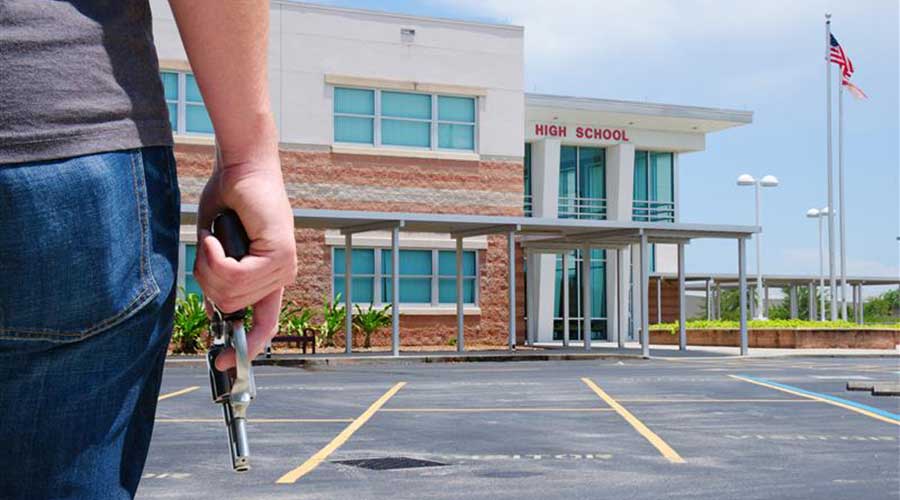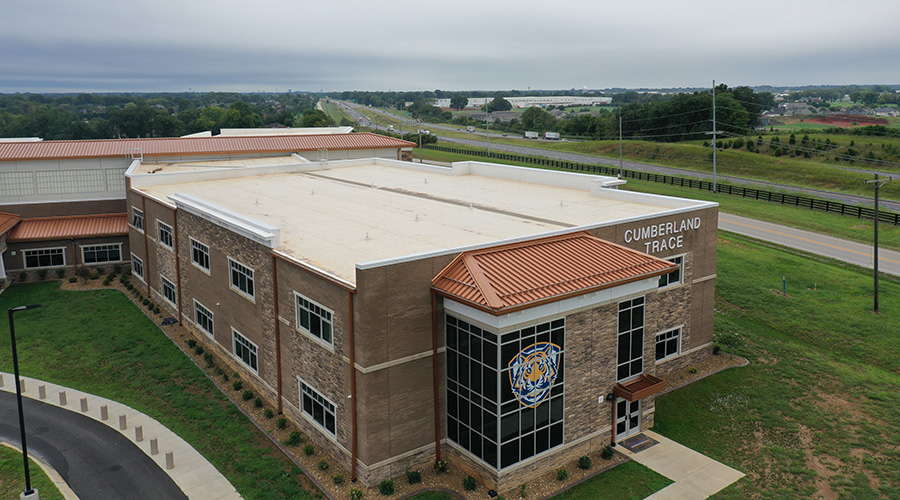Learning Lessons in Fire Safety
Arson, smoking and risky behaviors are among the challenges educational facilities face when safeguarding students, staff and property.
Planning for fire safety is a challenging task in any facility. Doing so in educational facilities, including higher education and K-12 facilities, is more difficult because of the unique challenges found in those environments.
The Federal Emergency Management Agency (FEMA) reports an estimated 14,000 fires occur annually in school facilities, covering day care centers through high schools. The National Fire Protection Association reports an average of 2,200 fires annually in college dormitories alone. According to the data, the average property damage that results from a fire is about $15,000, for a total of more than $220 million. Fewer than five deaths are reported in a typical year.
Consider Circumstances
Because the student population is different from the population found in other facilities, educational facilities pose fire safety challenges not found in most other commercial and institutional facilities. Many students are simply ignorant of the need for fire safety. Not all are aware of the difference between safe and unsafe activities.
That issue is especially pressing in campus housing. Students there frequently burn candles, use hot plates, smoke and operate electrical equipment in an environment that is loaded with combustible materials ranging from clothing and drapes to foam mattresses. Even worse, frequent false alarms may cause them to ignore all alarms or to disable individual smoke detectors or entire portions of the building's fire safety system.
Complicating matters is that school administrators find themselves trying to balance the need for security and fire safety. Oftentimes, measures they implement to improve school security interfere with safe building egress in the event of a fire emergency.
The activities performed in educational facilities also create conditions that are not typically found in other commercial and institutional facilities. School laboratories often have stockpiles of chemicals that if improperly stored or used could create a fire hazard.
It is a common practice in educational facilities to display posters, artwork and other combustible materials in corridors — corridors that are designed to provide safe passage from the building during a fire emergency.
Understanding the Cause
To improve fire safety in educational facilities, it is important to first understand where and why fires occur. In K-12 buildings, the most common cause of fire is arson, according to FEMA. Most fires in these facilities take place in restrooms. Fortunately, the vast majority of these fires are small and do little damage. That does not mean that they should be trivialized or ignored. Any fire is disruptive and has the potential to cause damage, injury and death. At a minimum, fires in K-12 facilities interfere with educational activities by forcing an evacuation of the building and diverting resources to the investigation of the incident.
In higher-education facilities, the most frequent location for fires is dormitories. According to the National Fire Incident Reporting System (NFIRS), nearly one-third of all fire incidents in dorms are caused by arson. Twenty-one percent of dorm fires are the result of cooking. Smoking accounts for 14 percent. Sources of open flame, such as candles, account for another 12 percent of dorm fires. Improper use of electrical equipment and faults within the electrical distribution system cause 8 percent of the fires.
Although arson is the leading cause for fires in K-12 facilities, facility executives sometimes compound fire safety problems. For example, all multistory buildings are required to have exit stairwells that are fire-rated enclosures. This provides building occupants with a protected path to the outside. Although these areas may have been designed to meet the requirements, changes over time can diminish their integrity. Materials often are stored in stairwells. Door closures and latches wear or go out of adjustment, resulting in doors that do not fully close and latch. Doors are propped open. Renovations to the building, particularly with the installation of new telecommunication and HVAC systems, result in piping and conduit penetrating fire-rated walls. If those penetrations are not properly sealed, they provide an avenue for the spread of smoke and flame.
Similarly, fire-rated corridors often lose their fire rating over time. Renovation projects can result in the use of materials that are not fire-rated. The installation of conduit and piping through the corridors will result in openings around the wall penetrations that will contribute to the spread of smoke and flame.
Another common renovation problem is the improper use of a fire-rated material. For example, most jurisdictions require carpet used in educational facilities to be flame-resistant. While the carpet fibers may burn at the point of contact with flame, they must be self-extinguishing away from the flame. But this rating is for carpet installed horizontally. If the carpet is installed vertically, it may no longer be self-extinguishing. If carpet is to be used in a vertical application, it must be fire-rated for that application.
One of the most effective means of improving fire safety is to install a sprinkler system. This is particularly true in educational facilities because of their high volume of combustible materials and the high incidence of arson. Although sprinkler systems are not required in all educational facilities, their use is considered to be a major factor in the low fatality rate in fires.
But sprinkler systems are only as good as their maintenance. Too often, sprinkler systems fail to function at all simply because someone closed a valve when performing maintenance on the system and failed to reopen it when finished.
Systems must be regularly inspected and tested. If the facility is equipped with a building automation system, the status of all sprinkler system valves should be monitored. At no time should maintenance personnel be allowed to override a sprinkler system valve position alarm.
Although smoke detectors have been installed in practically all educational facilities, their installation alone is not sufficient to improve fire safety. One of the most common problems is that smoke detectors are disconnected or disabled.
Students, particularly those living in dormitories, frequently tamper with smoke detectors to avoid setting off the alarm system when they are cooking or smoking. In older, non-supervised systems, there is no way to easily determine which detectors have been disabled. Newer systems, with centrally monitored, addressable detectors, can identify inoperative units.
Students are not the only ones who disable smoke detectors. Maintenance personnel may disable detectors in locations where their activities or the operation of building equipment results in frequent false alarms. Detectors in mechanical rooms, electrical equipment rooms and custodial closets are often disabled even though these areas are unoccupied and therefore would benefit the most from working smoke detectors.
Improving Fire Safety
To overcome the challenges presented by educational facilities, there are a number of specific steps these facilities can take to improve fire safety. The first step is to educate the community about the importance of fire safety and to inform the population about unsafe practices.
Students generally are not aware of fire safety or the consequences of unsafe practices. Most have never had to think about it. Even at the college level, students seldom understand the risks involved or the potential consequences of their actions when it comes to fire safety. A training program that focuses on risks and actions to take in the event of a fire will vastly improve fire safety.
Moreover, faculty and staff members, including maintenance personnel, may understand the basics of fire safety yet fail to realize that their own actions may increase risk. Propping open corridor and stairwell doors, storing combustible materials in stairwells, and storing combustible materials in mechanical and electrical equipment rooms all contribute to potential fire risks. However, all these actions are routinely done by building occupants and maintenance personnel.
Regular fire safety inspections are essential. All fire safety systems, particularly smoke detector and sprinkler systems, should be inspected and tested. All fire-rated corridors and stairwells should be inspected to ensure that they are free of clutter and debris and remain properly sealed. All doors should be checked to ensure that they close and latch properly.
Statistics show that sprinkler systems are very effective in saving lives, reducing injuries and limiting damage. However, barely more than one-third of all campus dormitories have sprinklers. Less than 10 percent of college Greek housing facilities are sprinklered.
When fires occur, dormitories with sprinklers sustain 36 percent less damage than nonsprinklered dormitories. When sprinkler systems are combined with smoke detectors, the chance of an individual surviving fire is 97 percent. With smoke detectors alone, those chances fall to 50 percent. For these reasons, some states have been moving to mandate the installation of sprinklers in all educational facilities.
Where It’s Going
There are several noteworthy trends concerning fire safety in educational buildings. One is that the number of fires not related to arson is steadily decreasing. Many believe that this decline is the result of stricter building codes, greater use of fire-resistant building materials, and increased use of sprinkler systems.
While sprinklers are generally required in new construction, their $2 to $3 per square foot installation cost has limited how often they are retrofit into existing facilities. However, as these older facilities are renovated and updated today, sprinkler systems are being added. Many facilities have come to recognize that although sprinklers are expensive and may not be required, the risk to the institution in both direct and indirect losses is simply too high to be without them.
A new generation of smoke detector systems is improving performance while limiting nuisance and false alarms, particularly in dormitories. In many cases, older systems consisted of battery-powered units that sounded only in the student’s room. Newer systems are tied to a central alarm panel. Panels can be programmed to sound buildingwide alarms under a range of conditions. For example, panels can be programmed not to sound the buildingwide alarm if only one smoke detector is activated. The alarm is then sounded as soon as the second smoke detector goes into alarm. By requiring two smoke detectors to activate before triggering the alarm, the system practically eliminates nuisance and false alarms without compromising safety.
New technology can help, but it won’t solve all fire safety problems for educational facilities. Fire safety requires commitment. Administrators must make it a priority. Facility executives must make it a priority. Students and faculty must make it a priority. Without that commitment, the investment in new fire safety technologies will provide little return.
Universities Fighting Off-Campus Fires
Officials at the University of Maryland are trying to spread their fire safety message to students in off-campus housing and the landlords that own the structures.
A team of fire experts from across the country gathered at the College Park campus in February just weeks after a fire at an off-campus residence left one dead. It was the second fatal off-campus fire at the university in nine months.
State, county and campus fire officials, as well as landlords and students, participated in the meetings aimed at helping the campus community develop a comprehensive fire strategy. Ed Comeau, director of the Center for Campus Fire Safety, a nonprofit group, says sharing experiences at meetings like the one held at the University of Maryland can help colleges across the nation develop education programs to improve fire safety.
“We can’t rely on the old methods of reaching today’s students,” he says. “Fire safety programs have to be creative, cutting-edge and use graphic demonstrations that show how fast fire can spread and kill.”
Some colleges have gone as far as building mockups of student rooms in the middle of campus and then setting them on fire.
Nearly 80 percent of college fire fatalities happen off campus, according to the Center for Campus Fire Safety. Since January 2000, 84 students have died in student housing fires. Factors common in the student housing fires include a lack of automatic sprinklers, missing or disabled smoke alarms, careless disposal of smoking materials, and alcohol consumption.
The meeting at the University of Maryland comes just months after a similar gathering State College, Pa., where a fatal off-campus fire erupted in April 2005. Officials there convened a task force to identify strategies to prevent a second occurrence and implemented sweeping changes within six months.
The Center for Campus Fire Safety suggests students and their parents should make sure off-campus housing facilities have working smoke alarms and at least two exits. It also suggests asking a fire inspector to look at the building and its electrical wiring.
— Mike Lobash, executive editor
|

James Piper, PhD, PE, is a writer and consultant who has more than 25 years of experience in facilities management. He is a contributing editor to Building Operating Management.
Related Topics:












